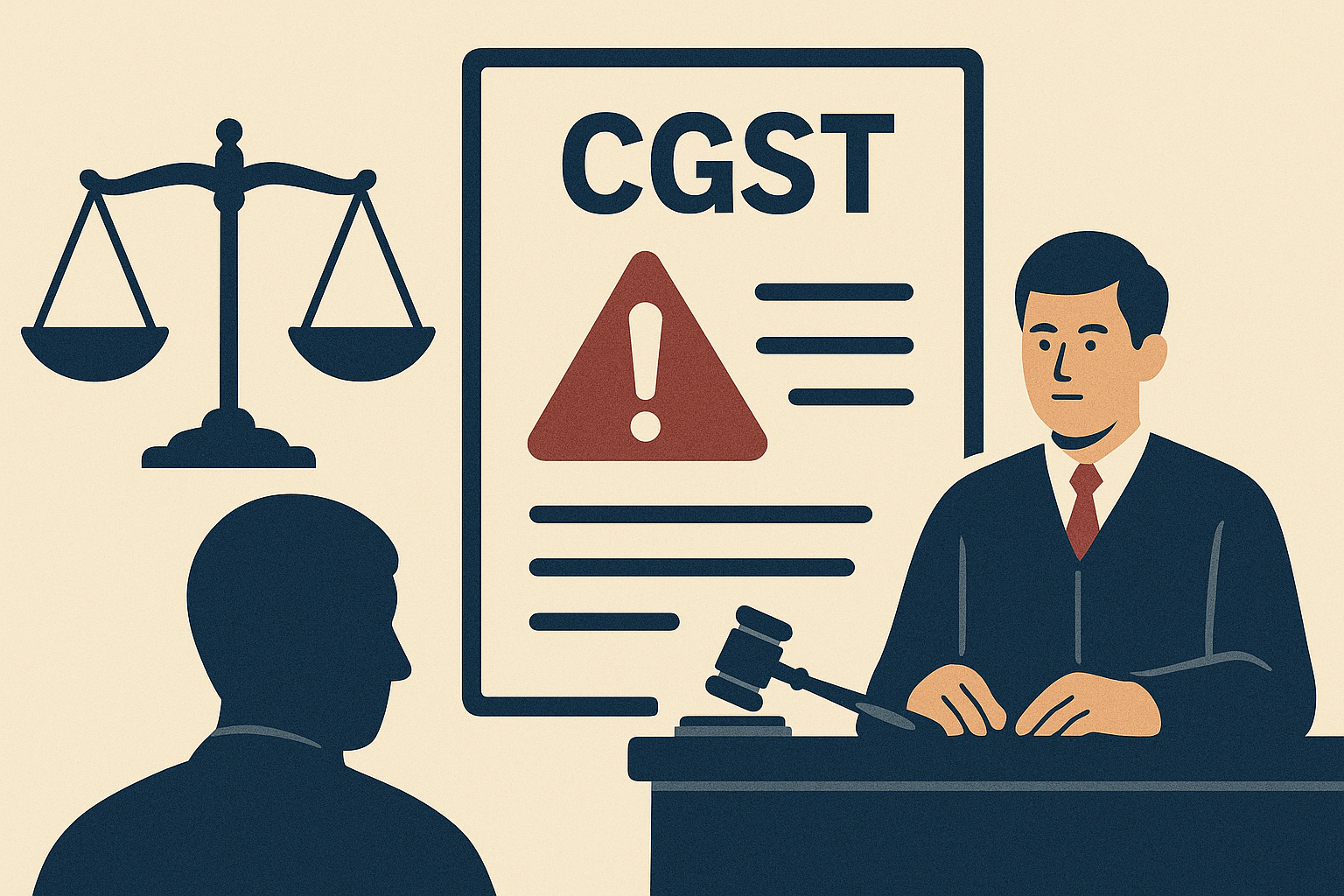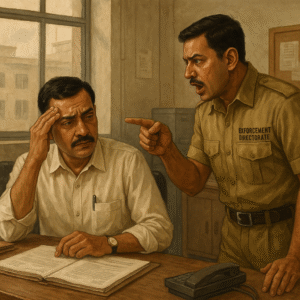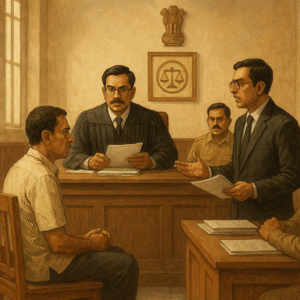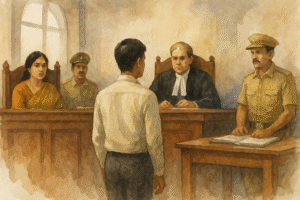Simplified Explanation of the Judgment
The High Court examined the procedural history in detail. First, there had been a separate writ petition earlier, where the issue was cancellation of GST registration. That earlier matter ended when the registration cancellation was revoked by order dated 11 December 2023, leading to withdrawal of that writ. Importantly, five days after that outcome, on 18 December 2023, the department issued a Demand-cum-Show Cause Notice (SCN) under Section 74 alleging fraud and demanding tax. The petitioner submitted a reply to this SCN. Later, on 30 April 2024, the adjudicating authority passed a final order under Section 74 against the petitioner. These critical dates and steps are recorded in the High Court’s judgment.
When the Section 74 order went against the petitioner, the statute provided a clear, structured appellate remedy—an appeal to the first appellate authority under Section 107 of the CGST Act. Section 107 prescribes a three-month period from the date of the order to file the appeal, with a further condonable delay of one month. In other words, a taxpayer usually has up to four months (subject to pre-deposit and other statutory conditions) to challenge an adverse order before the appellate authority. The High Court took note of this appellate framework and applied the well-settled principle that when an effective statutory alternative remedy exists, the writ court normally should not interfere at the first instance, unless exceptional circumstances are clearly demonstrated (such as violation of natural justice, lack of jurisdiction, or a patently void proceeding).
Here, the Court noted that the earlier registration matter (which ended with revocation of cancellation) was a different controversy altogether compared to the subsequent Section 74 proceedings. The SCN dated 18 December 2023 initiated a distinct adjudicatory process focusing on alleged fraud and tax liability; it was not merely a continuation of the registration-cancellation episode. The petitioner had already responded to that SCN and the adjudicating authority considered the reply before issuing the final order dated 30 April 2024. Thus, the Court found no foundational reason to bypass the appellate channel and entertain the writ directly.
There was, however, one pressing practical difficulty. The petitioner filed this writ on 17 August 2024—after the window for a timely appeal had practically expired (even counting the maximum condonable period). On the face of the record, the last date to file a delayed appeal would have been 30 August 2024. The High Court handled this fairly and pragmatically: it preserved the petitioner’s right to pursue the statutory appeal by granting a specific window from the date of its judgment. The Bench directed that if the petitioner files an appeal within four weeks from the date of the High Court’s order (23 September 2024), the appellate authority shall consider the appeal on merits “without reckoning the delay.” In effect, the Court ensured that the petitioner would not be shut out on limitation and could have a full hearing before the proper appellate forum.
To be clear, the Court did not express any view on the merits of the tax dispute itself. It only decided the proper forum and pathway. By doing so, the Court reaffirmed two key tenets: (i) the doctrinal preference for exhausting alternative remedies where the statute provides a comprehensive mechanism, and (ii) the Court’s readiness, in appropriate cases, to protect a litigant’s ability to access that mechanism by directing condonation of delay, especially when the challenge is brought to the High Court within a reasonable timeframe.
The bottom line is that the writ petition was disposed of with liberty to the petitioner to file a Section 107 appeal within four weeks from 23 September 2024, and the appellate authority was asked to ignore the delay and decide the matter on merits. Taken together, these directions strike a balance between procedural discipline (use the appellate hierarchy) and substantive justice (do not let technical delay defeat a potentially valid grievance).
Significance or Implication of the Judgment (For general public or government)
This decision is instructive for both taxpayers and tax authorities in Bihar and beyond:
- For taxpayers: It underscores that when the CGST Act offers an appeal (here, Section 107), High Courts will expect parties to use that route. Filing a writ straightaway—without exceptional grounds—will usually not succeed. However, the Court also demonstrated sensitivity to limitation barriers by facilitating access to the appellate forum and directing that delay should not defeat the appeal. Practically, taxpayers should carefully diarise limitation periods after adverse orders and prepare pre-deposit and documentation in time.
- For the authorities: The judgment separates two distinct streams—administrative issues like registration cancellation and adjudicatory issues like Section 74 determinations. Even if registration is restored, a later or parallel SCN on substantive tax liability can proceed on its own footing if issued and adjudicated in accordance with law. The Court’s approach encourages disciplined adherence to statutory processes and supports the integrity of the appellate system.
- For the justice system: The order is a measured application of the “alternative remedy” rule. It also showcases the High Court’s equitable discretion to ensure that statutory remedies remain meaningful, not illusory, by directing that an otherwise time-barred appeal be heard on merits when the circumstances warrant such relief. This fosters a fair balance between procedural rigor and access to justice.
Legal Issue(s) Decided and the Court’s Decision with Reasoning
- Whether the writ court should entertain a challenge to a Section 74 order despite the availability of a statutory appeal under Section 107 of the CGST Act.
Decision: No. The Court held that the order under Section 74 is appealable and the petitioner must avail the appellate remedy. The writ was disposed of accordingly. Reasoning: The earlier registration-cancellation episode (ultimately revoked) was a different matter from the subsequent Section 74 adjudication. The petitioner had already replied to the SCN, and the adjudicating authority considered that reply before passing the impugned order. In such circumstances, writ intervention at the first instance is unwarranted when the statute provides a complete appellate route. - Whether the delay in filing the statutory appeal should defeat the petitioner’s right to be heard on merits.
Decision: The Court protected the petitioner’s right by granting four weeks from 23 September 2024 to file the appeal, with a direction that the appellate authority shall consider the appeal on merits without counting the delay. Reasoning: To ensure substantive justice and preserve the efficacy of the statutory remedy, the Court exercised its discretion to neutralize limitation as a technical bar in the specific facts and timeline of the case.
Case Title
M/s Khan Brothers vs. Union of India & Ors.
Case Number
Civil Writ Jurisdiction Case No. 12334 of 2024
Coram and Names of Judges
Hon’ble The Chief Justice K. Vinod Chandran; Hon’ble Mr. Justice Partha Sarthy
Names of Advocates and who they appeared for
- For the petitioner: Mr. Rajeev Ranjan, Advocate; Ms. Bela Singh, Advocate
- For the respondents (Union/CGST & Central Excise): Dr. K. N. Singh, Additional Solicitor General; Mr. Anshuman Singh, Senior Standing Counsel, CGST & CX; Mr. Shivaditya Dhari Sinha, Advocate; Mr. Devansh Shankar Singh, Advocate
Link to Judgment
MTUjMTIzMzQjMjAyNCMxI04=-Y35je–ak1–gtLQw=
If you found this explanation helpful and wish to stay informed about how legal developments may affect your rights in Bihar, you may consider following Samvida Law Associates for more updates.








